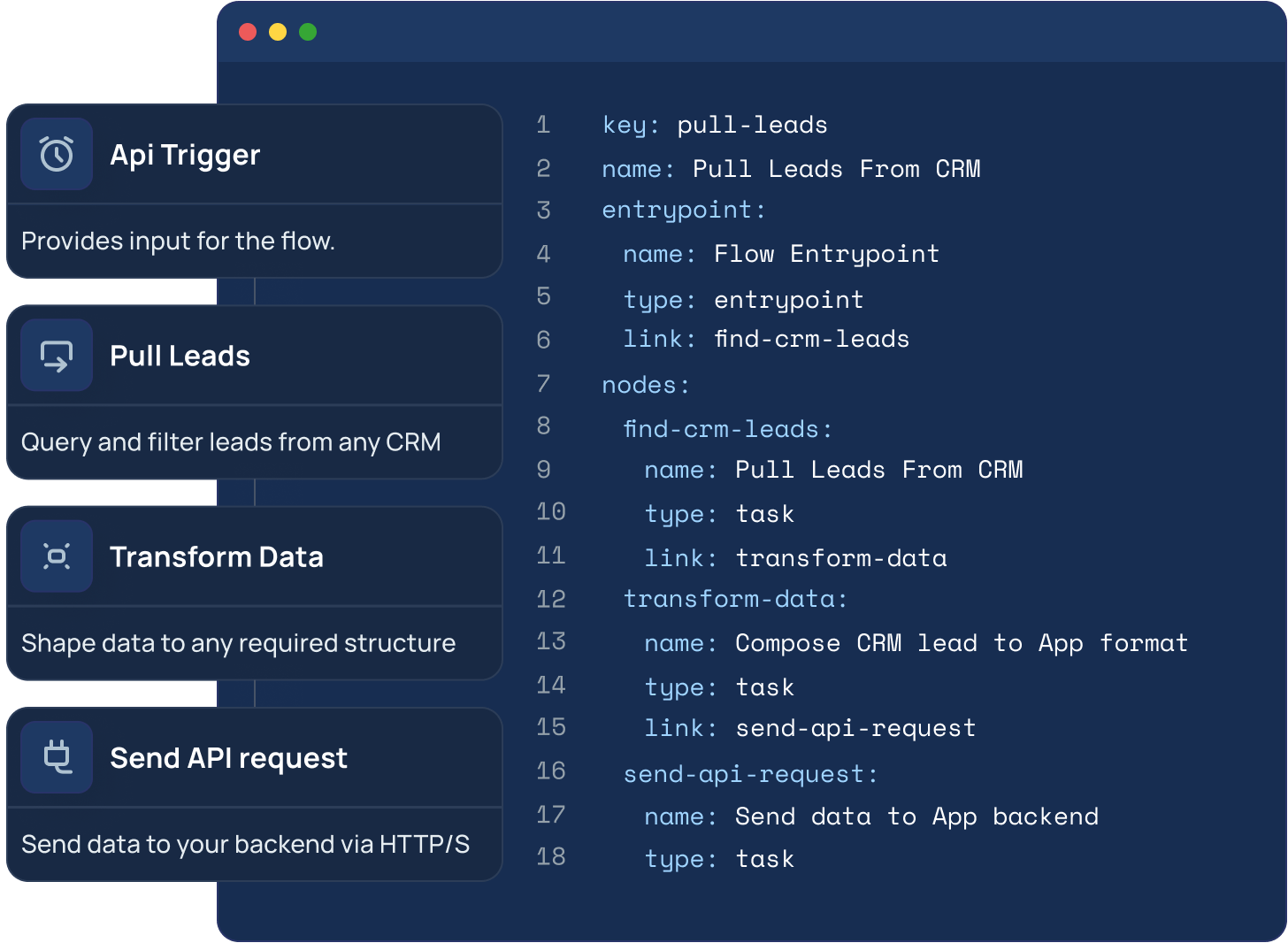Several years ago, Daniil Bratchenko, one of the first employees at DataRobot, the AI and data science platform, observed that enterprises adopting software-as-a-service (SaaS) apps experienced a perennial challenge. Despite the abundance of tools to build integrations between SaaS apps and services, many SaaS apps and services still weren’t playing nicely with each other.
“Integrations are a fundamental part of every company’s IT environment,” Bratchenko told TechCrunch in an email interview. “When a company is considering purchasing new software, one of their top priorities is how well the system will integrate with their existing applications … [But] building the hundreds of integrations requested across their customer base takes precious engineering hours away from building core features.”
There’s credence to Bratchenko’s claims.
A recent survey by Salesforce’s MuleSoft — which isn’t the most impartial source considering that it sells app integration tooling, to be fair — found that nearly 90% of companies find integration with existing systems to be a commonly occurring sales hurdle. Twenty percent of the respondents believe integration to be highly time-consuming, while 44% say that they’ve been in a situation where they’ve not been able to integrate apps with existing systems.
Given that the average company uses around 130 apps, according to Statista, it’s not difficult to see how the problem can quickly reach an unmanageable — and insurmountable — level.
The search for a solution to SaaS app integration led Bratchenko — who prior to joining DataRobot sold a company, movie recommendation engine Kionobaza.tv, to Yandex, the Russian technology giant — to found Integration.app, with the goal of helping engineering teams more easily integrate their company’s products with third-party apps.
Integration.app today emerged from stealth with $3.5 million in funding led by Crew Capital, with participation from Seedcamp and Cortical Ventures, which Bratchenko says will be put toward supporting the startup’s go-to-market efforts, sales and marketing and doubling the size of Integration’s team from 12 full-time employees to 24 within the next 12 months.
“The decision to raise equity … enables us to invest upfront in product and sales without having to spend on servicing debt as they build the business,” Bratchenko said. “We also wanted our investors to have the equity incentive early on to be able to be fully invested in the company and be strategic partners — not just a source of capital.”
Integration is essentially an integration platform as a service (iPaaS) provider, offering a set of tools to connect both apps and data. There’s a number of vendors competing in the $3.7-billion-plus iPaaS sector, like Digibee, Boomi and the aforementioned MuleSoft — which isn’t surprising factoring in the sheer demand. A 2021 study from TeamDynamix — an iPaaS vendor, full transparency — found that 27% of companies have already invested in iPaaS and that 66% had plans to do so within the next year or two.
Bratchenko makes the case that Integration’s technology sets it apart from its many rivals.

Integration’s app connector technology. Image Credits: Integration
Integration uses large language models along the lines of ChatGPT to automate certain aspects of the software integration process. For instance, Integration’s “connector builder” tool taps LLMs to “read” API documentation to figure out how to integrate with a particular app, which Bratchenko claims makes it possible for Integration customers to build “thousands” of connectors in relatively short order.
Developers using Integration can configure one integration “scenario” — e.g. importing customer data from a customer relationship management platform — and Integration will automatically map the necessary APIs and UIs across multiple apps to generate upwards of “dozens” of connectors, Bratchenko says.
“[Integration] helps engineering teams to integrate their products with every other SaaS their customers use,” he said. “[It’s a] universal integrations platform with application-specific customization. This minimizes the time it takes to maintain hundreds of integrations.”
Now, Integration isn’t the only iPaaS experimenting with generative AI features to streamline app integration. Zapier recently introduced an AI-powered tool, Canvas, that lets users map out entire app-to-app workflows from a single pane of glass. Elsewhere, Amazon plans to launch functionality in AWS AppFabric, its iPaaS offering, that’ll use LLMs and other types of AI models to complete a range of tasks across connected SaaS apps and services.
If Bratchenko is feeling the heat, though, he didn’t show it.
“Integration began commercialization four months ago and has quickly scaled to dozens of paying customers,” he continued. “Catalyzing a mindset shift among engineering teams to leverage embedded integration technology will be a challenge, but the step-function improvement that Integration offers in terms of efficiency and customizability, relative to legacy incumbent competitors, is what we believe will lead to widespread developer adoption.
